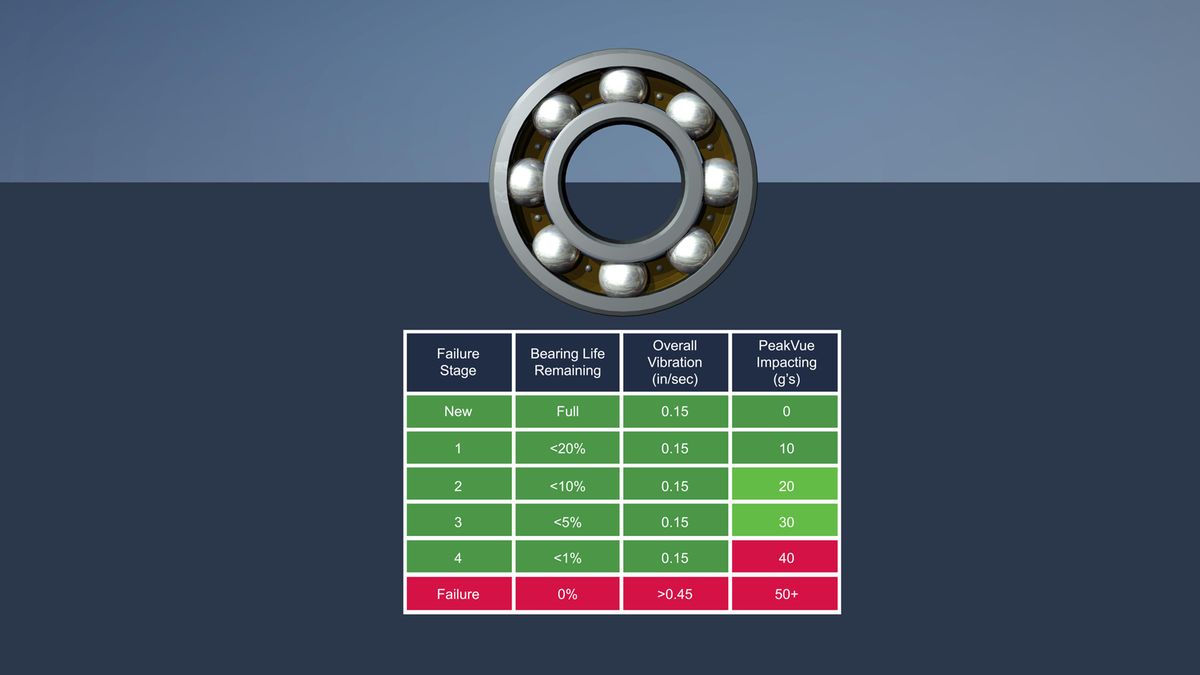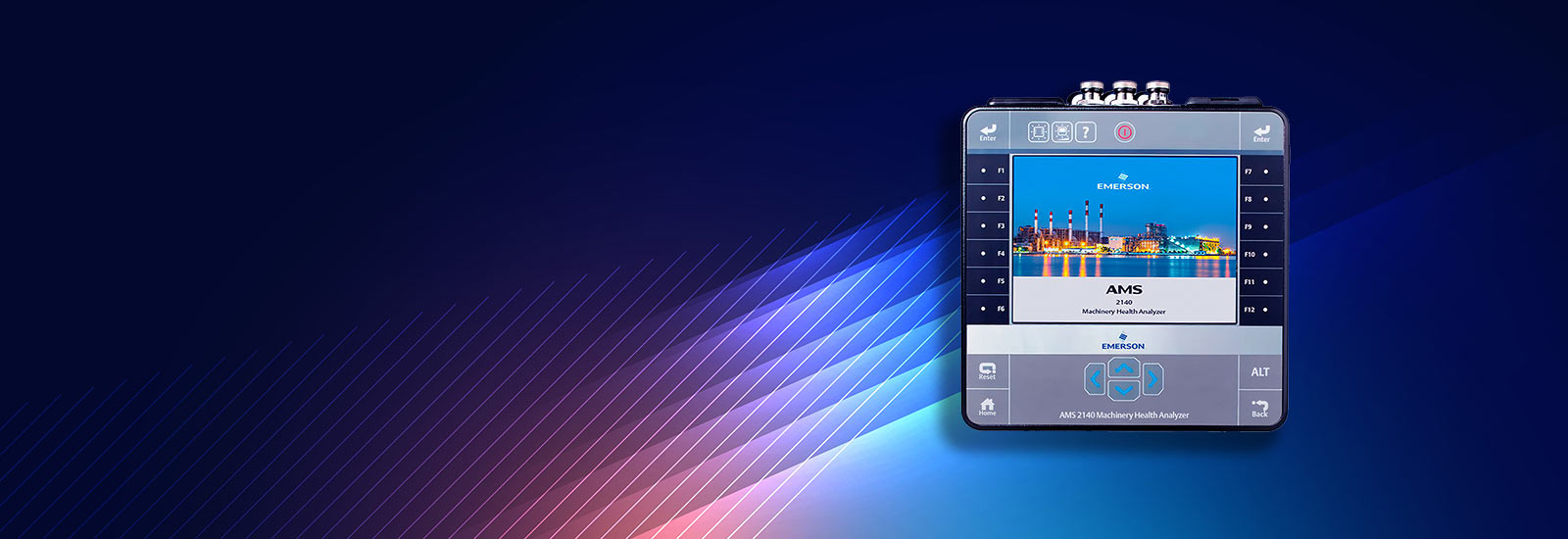Every day there are new innovations to make our tasks easier and more efficient in the work place. So why risk the success of your PdM (Predictive Maintenance) program on yesterday’s technology? With the GO EMERSON trade-in program, you can take advantage of the latest technology for data collection, analysis, and communications. Trade in your existing non-Emerson route-based vibration system for the AMS 2140 Machinery Health Analyzer.

Let’s look at a typical process pump running between 900 and 4,000 RPM as it passes through the four stages of bearing failure. Starting with the baseline condition for a good bearing, we see a significant amount of overall vibration. However, it is important to note that the PeakVue value is at zero. This is because a good machine, properly installed and well lubricated, should not be impacting. Therefore we can state the Zero Principle – PeakVue on a good machine should be at or close to zero.
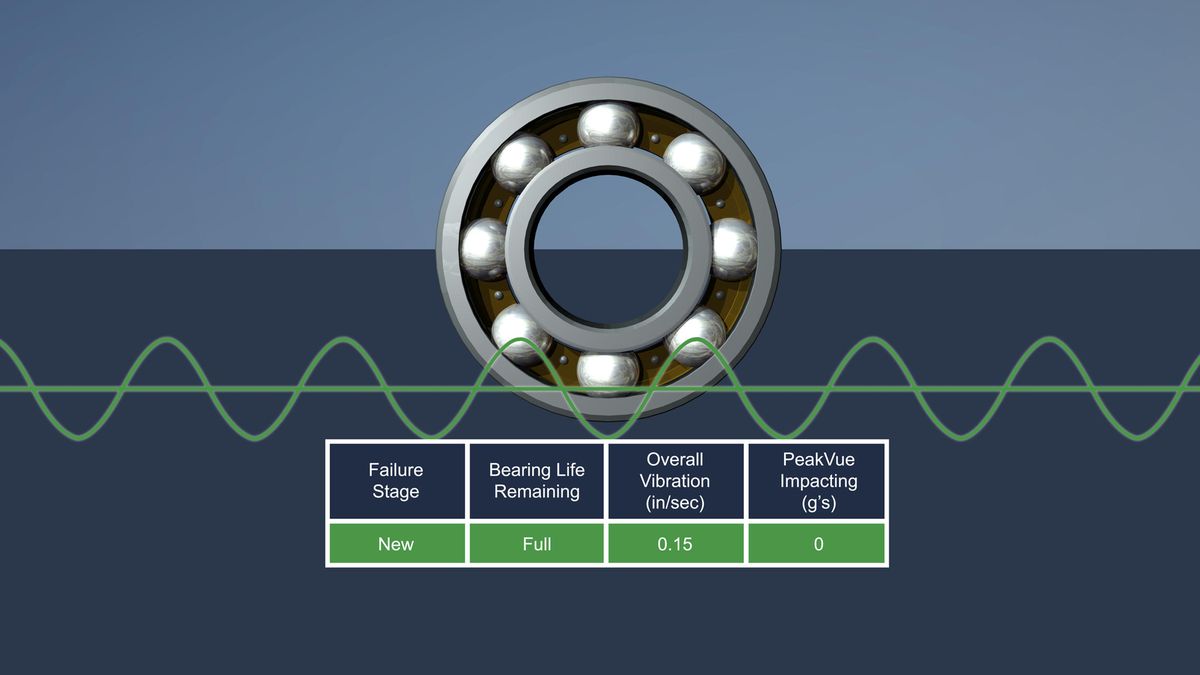

At stage 1 bearing failure, initially the defect is not visible to the human eye. There is no change in the overall vibration, but PeakVue already provides an indication that something is happening. When it climbs to a value of 10, there is a problem on the bearing.
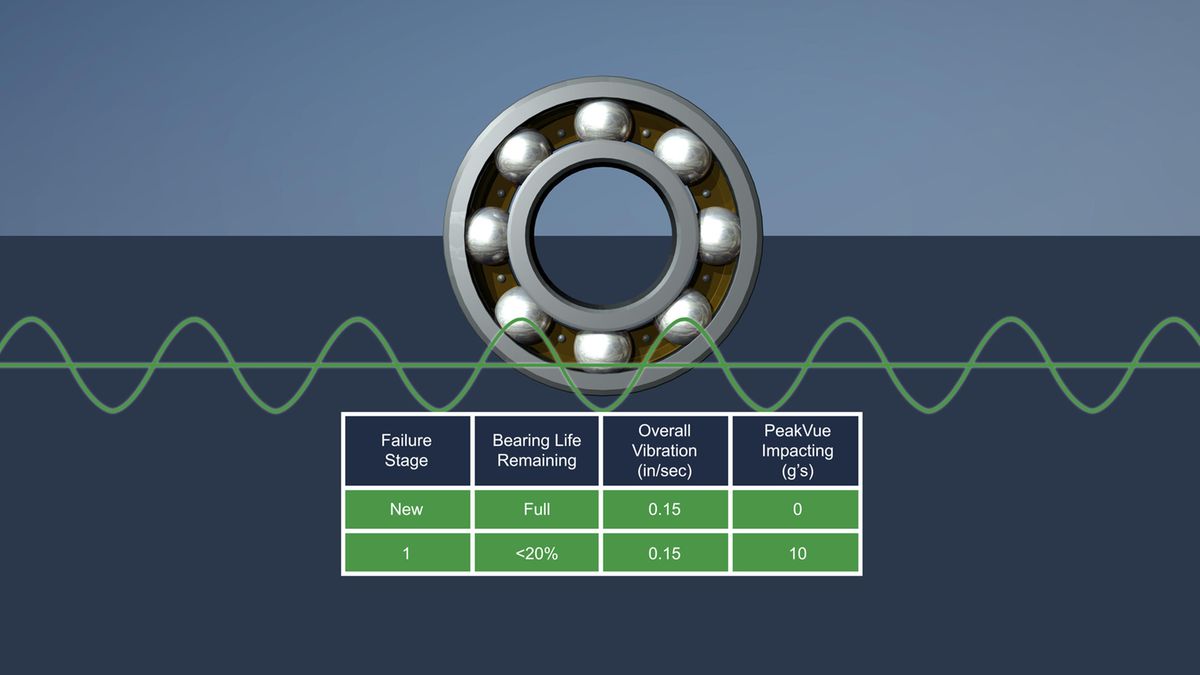

At stage 2, small pits will being to appear, and the bearing will have less than 10% of its service life remaining. Typically there is still not indication of the developing faults in the overall vibration, but PeakVue continues to climb. When it doubles to 20, there is a serious problem with the bearing.
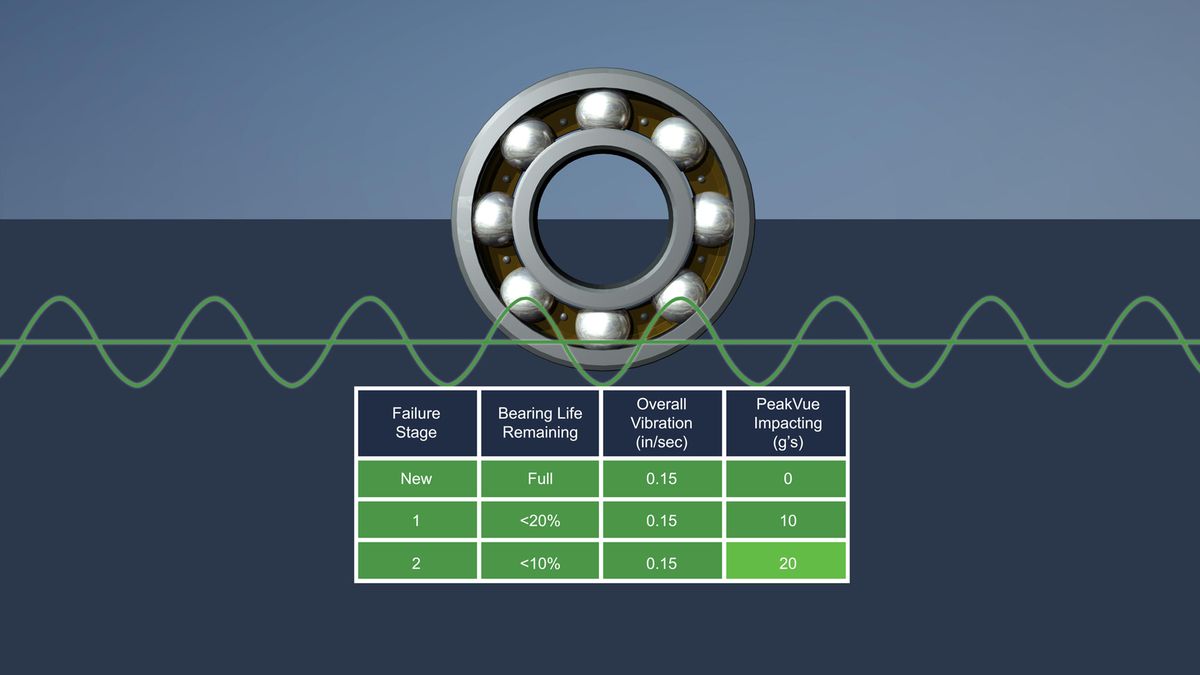

At stage 3, the bearing damage is now clearly visible. You may start to see a small increase in overall vibration of +/- 10%. Meanwhile, PeakVue continues to show the progression in fault severity.
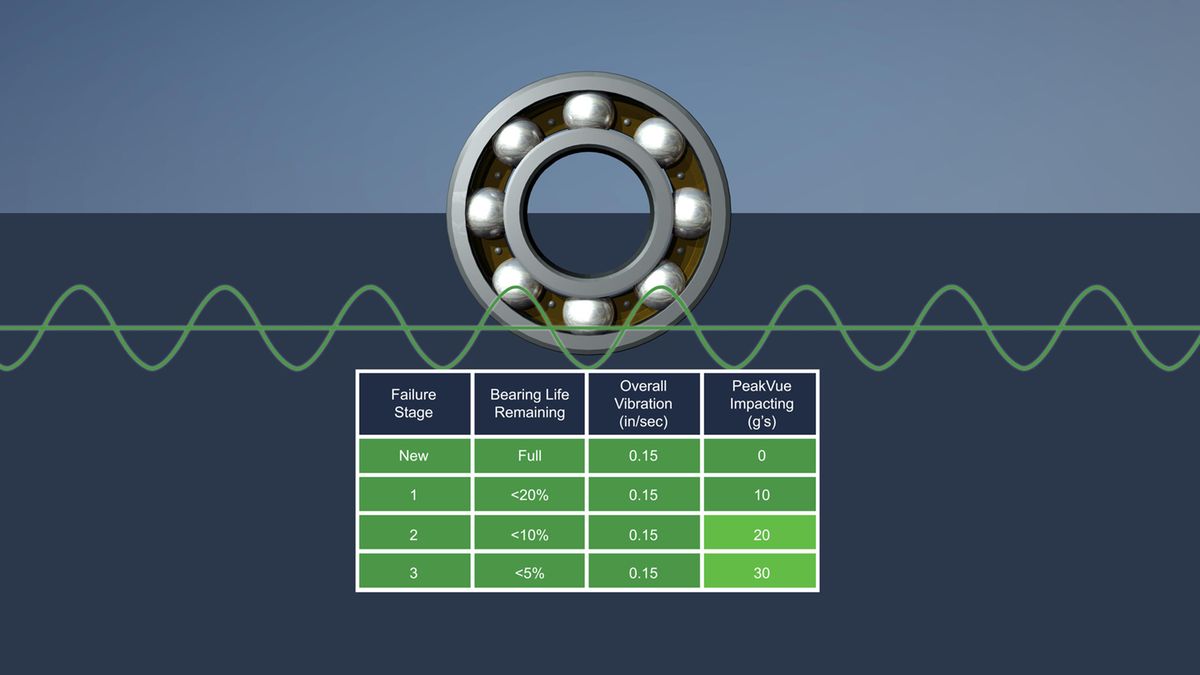

In the final stage of bearing failure, the overall vibration might rise 20% or more. In comparison, PeakVue continues to increase sharply – perhaps as high as 40 g’s – and signals that the bearing is approaching end of life.
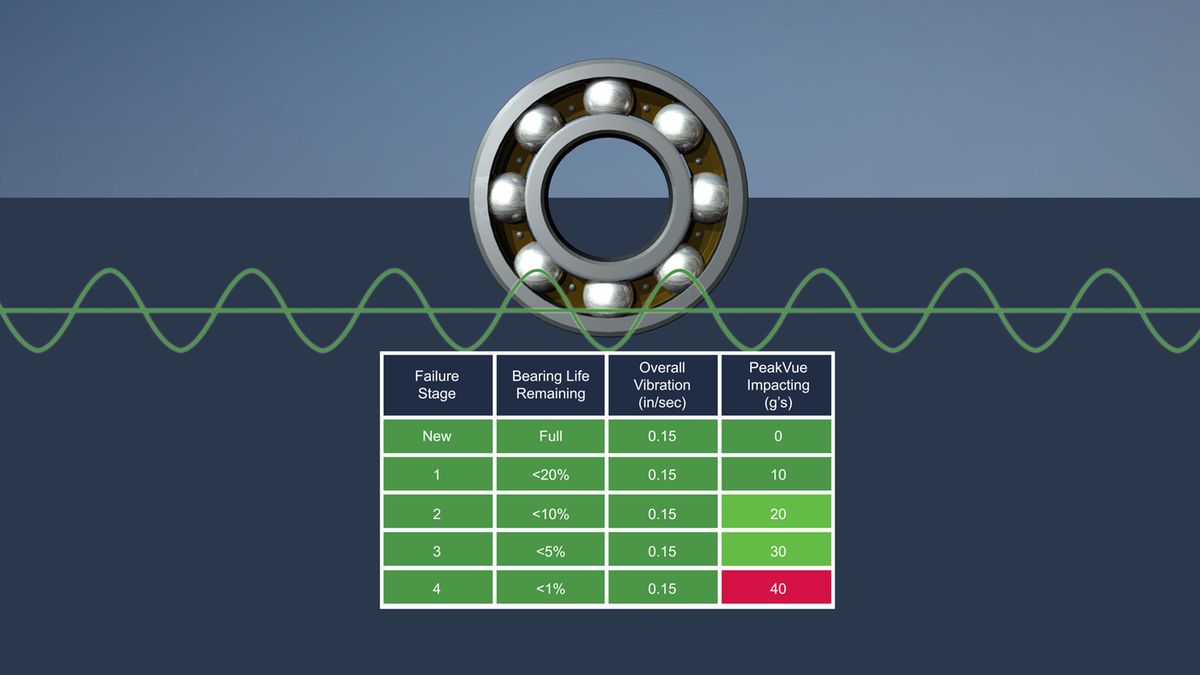

There will be a marked incrase in the overall vibration at the point of actual failure, but too late for planning. This in in effect notification that the machine is shutting down. In contrast, PeakVue has been indicating a developing fault over the past weeks and months. Immediately prior to failure, PeakVue levels may surge rapidly to 50 g’s or higher.
